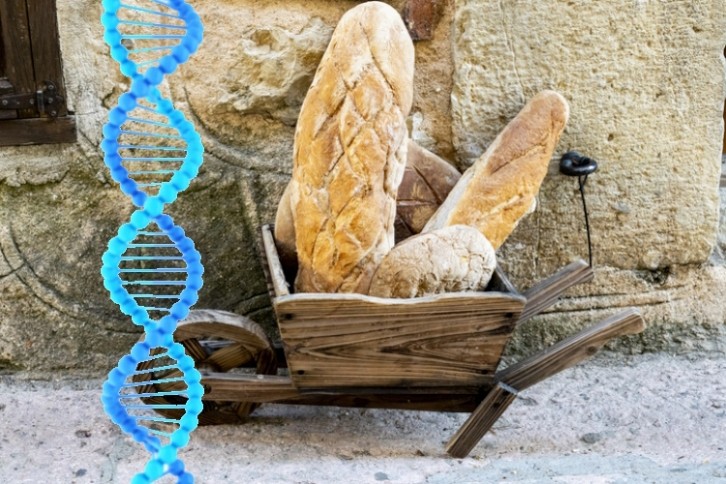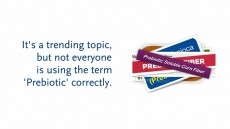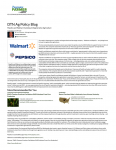Unlocking the breadbasket: How ancient wheat hybridization has shaped agriculture and bead production

Bread has provided delicious doughy calories that have energized populations from some of the first ancient cities. Ten thousand years later, bread wheat helps to sustain a global population of 8.2 billion people.
But what’s considered the ‘rapid’ spread of this iconic crop has long remained a biological mystery.
“Our findings shed new light on an iconic event in our civilisation that created a new kind of agriculture and allowed humans to settle down and form societies,” said Prof Brande Wulff, a wheat researcher at KAUST (King Abdullah University of Science and Technology).
Prof Wulff is one of the 71 researchers from The Open Wild Wheat Consortium – a collaborative aimed at leveraging the genetic diversity of wild wheat species to improve cultivated wheat varieties – to unlock the secret behind bread wheat.
The birth of bread wheat
The researchers worked back to a chance hybridization that took place in the Fertile Crescent near the southern Capsian Sea between 8,000 and 11,000 years ago, which it claims sparked an agricultural revolution.
Bread wheat (Triticum aestivum) is a hybrid of three wild grasses – made up of three genomes (A, B and D) within a single complex plant. It was a wild grass called Tausch’s goatgrass (Aegilops tauschii) – an otherwise unremarkable weed – that provided the D-genome when it crossed with early cultivated pasta wheat.
The OWWC believes its cultivation subsequently dispersed across the globe ‘within a few hundred or maybe a few thousand years’, with farmers quick to adopt the dynamic new crop. (The new species also spawned a new era for bakers: being high in gluten, which creates a more elastic and airy dough for breadmaking.)
But it’s that ‘rapid’ geographical advance that has puzzled wheat researchers.
Bread wheat doesn’t exist in the wild, and the hybridization event that introduced the D genome into the plant’s existing A and B genomes would have caused ‘a genetic bottleneck’. This refers to the significant reduction in genetic diversity of the new species compared to surrounding wild grasses.
Furthermore, wheat is an inbreeding species – meaning it self-pollinates – which suggests that bread wheat might struggle to thrive outside its original environment. So how did it become so widely cultivated?
Tracking the spread
To solve this conundrum, the OWWC researchers studied 493 unique accessions that spanned the entire geographical range of Ae. Tauschii – from northwestern Turkey to eastern China.
They then selected 46 accessions that reflected the species’ traits and genetic diversity to create a highly detailed genetic map (called a Pangenome) of Ae. tauschii.
Using this Pangenome, the group scanned 80,000 bread wheat landraces (locally adapted varieties) held by International Mazie and Wheat Improvement Center (CIMMYT) and also collected from around the world.
From this, the scientists figured out that around 75% of the bread wheat D-genome is derived from the lineage (L2) of Ae. tauschii that originates from the southern Caspian Sea. The remaining 25% is made up of lineages from other regions.
And it’s this 25% influx of genetic material that has defined the success of bread wheat.
“Without the genetic viability that this diversity brings, we would most likely not eat bread on the scale we do today,” said Prof Simon Krattinger, associate professor of Plant Science at KAUST.
“Otherwise, bread wheat today would be a regional crop – important to the Middle East – but I doubt that it would have become globally dominant without this plasticity that enabled bread wheat to adapt.”
An earlier study by the OWWC revealed the existence of a distinct lineage of Ae. Tauschii (known as L3 – the best-known gene for dough quality) from present day Georgia, about 500km from the Fertile Crescent.
Using the L3 Ae. Tauschii accessions, the researchers were able to track the hybridizations of bread wheat.
“The data beautifully supports a picture where bread wheat emerges in the southern Caspian, then with migration and agricultural expansion it reached Georgia, where gene flow and hybridizations with the peculiar, genetically distinct and geographically restricted L3 accessions resulted in the influx of new genetic material,” said Prof Krattinger.
“This is one of the novel aspects of our study and it confirms that using our new resources, we can trace the dynamics of these introgressions in bread wheat.”
Bread wheat of the future
In addition to solving this age-old biological mystery, the Ae. tauschii open source Pangenome and germplasm made available by the OWWC are already being used by researchers to discover new disease resistance genes that will protect wheat crops against threats like wheat rust. Breeders are also mining this wild grass species for climate-resilient genes that can be bred into elite wheat cultivars.
“This has been a wonderful collaborative effort by the OWWC, an international cross institute enterprise that has produced the best sequenced resource of a wild wheat relative in the world,” said Prof Wulff.
“Wild relatives such as Aegilops tauschii offer amazing genetic diversity that breeders can exploit with the tools we have now created and which have not been exploited in landraces, there is so much more potential that is untapped.”
Study:
Origin and evolution of the bread wheat D genome.
Authors: Cavalet-Giorsa E, González-Muñoz A, Athiyannan N, et al.
Nature (2024). doi.org/10.1038/s41586-024-07808-z























